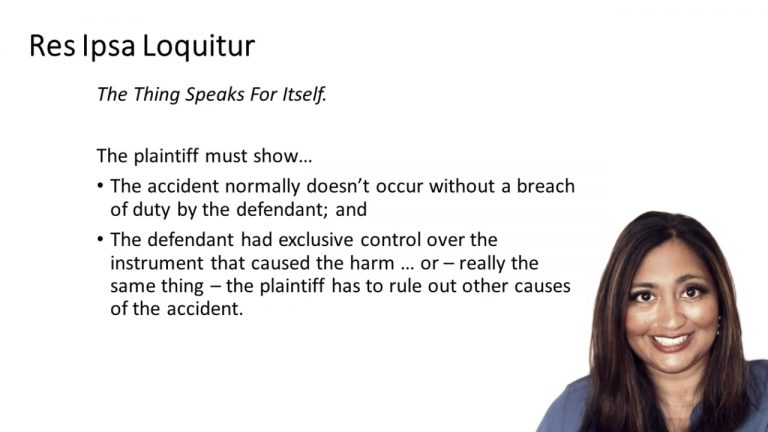SmartBrief
Confirm favorite deletion?
Torts Keyed to Franklin
Ybarra v. Spangard
Citation:
25 Cal. 2d 486 (Cal. Dec. 27, 1944)
ProfessorMelissa A. Hale
CaseCast™ – "What you need to know"
Facts
The Plaintiff (Ybarra) consulted with one of the named Defendants (Dr. Tilley) and was diagnosed with appendicitis. They scheduled an appendectomy. The surgery took place at Dr. Swift’s hospital and was done by the surgeon Dr. Spangard. Both doctors are named defendants in this case. On the day of surgery, the plaintiff went to the hospital and encountered several hospital staff from nurses to doctors. Among them was an anesthesiologist, Dr. Reser, who adjusted the plaintiff on the operating table. The plaintiff recalled laying his back against two hard objects at the top of his shoulders. When the plaintiff woke up from surgery, he experienced sharp pain in his right shoulder, and he testified to not having such pain before.
Plaintiff complained to Dr. Tilley and was given Diathermy treatment while in the hospital. This did not help; in fact, the pain spread down to his lower arm and grew worse upon release from the hospital. Plaintiff could not rotate or lift his arm. He received treatment from Doctor Tilley almost a year out from his surgery and returned to work wearing his arm in a splint. Plaintiff consulted with two doctors about his injuries. The first doctor opined that there was atrophy in his shoulder causing a diminished sensation and that it was the result of trauma or injury by pressure applied between the right shoulder. The second doctor expressed that the plaintiff’s injury was paralysis of traumatic origin not arising from pathological causes and not systematic. The injury resulted in a loss of use and restriction of motion of the right arm and shoulder. Plaintiff sues on claims on Res Ipsa Loquitor.
Only StudyBuddy Pro offers the complete Case Brief Anatomy*
Access the most important case brief elements for optimal case understanding.
*Case Brief Anatomy includes: Brief Prologue, Complete Case Brief, Brief Epilogue
- The Brief Prologue provides necessary case brief introductory information and includes:
Topic:
Identifies the topic of law and where this case fits within your course outline.Parties:
Identifies the cast of characters involved in the case.Procedural Posture & History:
Shares the case history with how lower courts have ruled on the matter.Case Key Terms, Acts, Doctrines, etc.:
A case specific Legal Term Dictionary.Case Doctrines, Acts, Statutes, Amendments and Treatises:
Identifies and Defines Legal Authority used in this case.
- The Case Brief is the complete case summarized and authored in the traditional Law School I.R.A.C. format. The Pro case brief includes:
Brief Facts:
A Synopsis of the Facts of the case.Rule of Law:
Identifies the Legal Principle the Court used in deciding the case.Facts:
What are the factual circumstances that gave rise to the civil or criminal case? What is the relationship of the Parties that are involved in the case.Issue(s):
Lists the Questions of Law that are raised by the Facts of the case.Holding:
Shares the Court's answer to the legal questions raised in the issue.Concurring / Dissenting Opinions:
Includes valuable concurring or dissenting opinions and their key points.Reasoning and Analysis:
Identifies the chain of argument(s) which led the judges to rule as they did.
- The Brief Prologue closes the case brief with important forward-looking discussion and includes:
Policy:
Identifies the Policy if any that has been established by the case.Court Direction:
Shares where the Court went from here for this case.
Topic Resources
Topic Outline
Topic Refresher Courses

 6m 37s
6m 37s